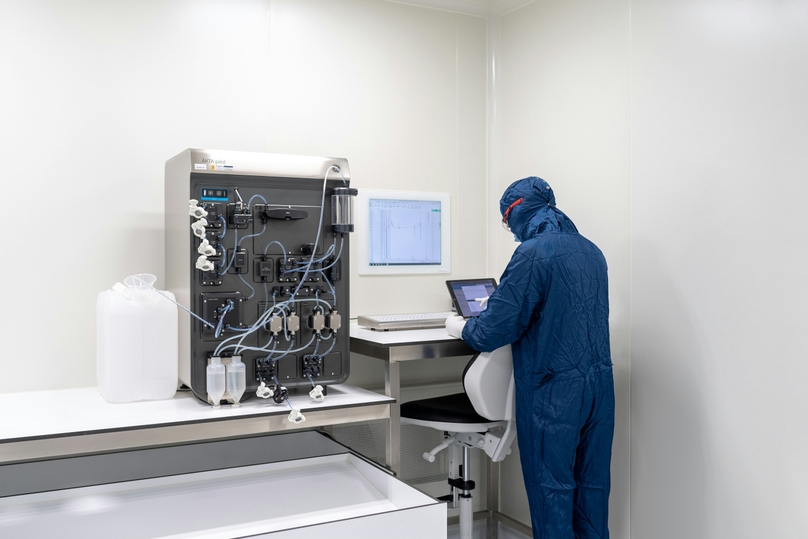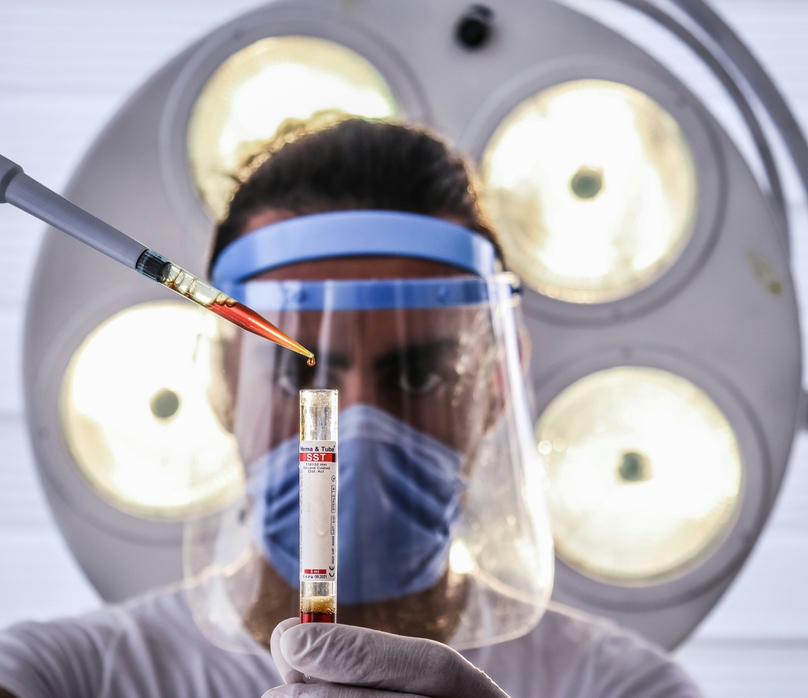What are Lab Safety Symbols?
When you walk into any science lab, you will encounter laboratory safety signs and symbols posted at various locations. Lab safety symbols aim to alert lab participants of potential dangers and remind them of the steps to take to eliminate said danger.
Some, such as the Flammable Material Hazard symbol, may be more familiar than others. Not only should signs be placed as reminders in appropriate positions, but all team members should be able to recognize the signs and understand their messages. This can help keep your team protected and prevent unnecessary accidents in your laboratory.
In this article, we will review lab safety signs and their meanings.
Tips for Following Lab Safety Signs
Anyone who works in a science laboratory is in an environment that contains hazardous chemicals, flammable materials, and delicate instruments daily. It’s important that everyone who comes into the lab knows and understands the signage and symbols they will encounter. This will make for adequate lab safety and efficient lab maintenance. Here are some tips for lab team members:
- Post signs correctly: As a lab manager, you are responsible for posting lab signs where needed. Check regularly to make sure they are all still in the correct place. Replace, move, or update them as needed.
- If uncertain, ask: Any member who is uncertain what a symbol means should be able to consult a guide that will define and explain the sign. To make your lab sign guide accessible to everyone at any time they may need it, it’s best to include it in your electronic lab notebook.
- Protective gear: All necessary safety gear should be located near hazardous material. It should always be the appropriate equipment to deal with a specific hazard or dangerous material.
- Review requirements: Before you allow members into your lab, ensure that you follow all state and federal safety regulations. This may include reviewing requirements, such as the Globally Harmonized System (GHS) of Classification and Labeling of Chemicals.
Lab Safety Symbols to Know
You and your team should be aware of the following lab safety symbols and what they mean. You should also know what personal protective equipment (PPE) should be used when handling these materials and what to do should a hazard arise.
Hazard Symbols
Here’s a rundown on some of the most common hazard symbols you’ll find in a science laboratory and what they mean:
- General warning signs: This is one of the most common lab signs and is often seen on doors, cupboards, pieces of equipment, and general areas in the lab. It is there to remind you to maintain safety rules and procedures.
- Health hazard: This sign alerts team members of chemicals that can cause health problems. For example, materials such as respiratory sensitizers, carcinogens, target organ toxins, reproductive toxins, and substances can cause volatile chemical reactions.
- Biohazard: This symbol denotes a material that poses an infectious hazard to humans. These objects or substances must be handled with extreme care using PPE.
- Harmful irritant: Although these substances are not corrosive, they can irritate the skin. For example, chlorine or ammonia are often skin irritants.
- Poison/toxic material: Exposure to substances with high toxicity through direct contact, inhalation, or ingestion can cause harm or may be fatal.
- Corrosive material: These substances can dissolve the skin on direct contact.
- Carcinogen hazard: Carcinogens are cancer-causing agents if ingested or inhaled. Contact with these substances should be minimized using gear such as fume hoods.
- Explosive material hazard: Materials with explosive properties may be liquid or solid. They can react with other substances or air to cause a fire or explosion.
- High voltage: Protective clothing should be worn at all times in high voltage areas. Otherwise, these areas should be avoided.
- Electrical hazard: These may cause a mild shock or death depending on the strength of the electrical current.
- Noise hazard: Certain pieces of lab equipment such as sonicators, centrifuges, and high-pressure cleaning equipment may, without the right protection, cause temporary or permanent hearing loss.
- Toxic gas: This sign warns of poisonous gaseous materials that can cause severe health damage if inhaled.
- Laser beam hazard: Eyes and skin should be protected from potential laser beam damage.
- Low-temperature warning symbols: This is an indication of temperatures that are below freezing. For example, storage for liquid nitrogen requires a frigid temperature.
Fire Safety Symbols
Fire safety symbols are frequently seen around the lab. There are generally two types. One type indicates fire hazards such as:
- No open flames
- Flammable materials
- Oxidizing materials
The others indicate aids and solutions for use if a fire breaks out. For example:
- Fire alarm
- Fire extinguisher
- Fire blanket
- Fire hose
First Aid Symbols
Even when proper safety rules and precautions are in place in a science laboratory, accidents may happen. You and your lab team must be familiar with all the necessary first aid procedures. You should also know where first aid items are located and ensure that they are maintained and kept up-to-date at all times. Once again, your first aid kits’ inventory and their location can be kept in your electronic lab notebook for easy reference. First aid symbols include:
- First aid station
- AED or defibrillator
- Emergency meeting point
Radiation Symbols
Anyone in a laboratory that works with or around radioactive materials should have regulation PPE and be aware of safety mandates for using these materials. Furthermore, they should be trained to understand the characteristics of radioactive materials. Team members should know how to detect and measure radioactivity and possible non-ionizing radiation hazards and be up to date on current regulations and emergency procedures. Radiation symbols include:
- Radiation symbol
- Non-iodization symbol
- IAEA ionizing radiation hazard
Physical Safety Symbols
Physical safety symbols in the laboratory have two main purposes. Some are designed to inform lab team members about things that are prohibited in the laboratory. For example, food and drink, medications, and areas where pacemakers and metallic implants are not permitted. Some are to indicate where certain PPE is required, such as boots, hearing protection, safety glasses, protective clothing, respirators, and where they are located. Other physical safety symbols are in place to alert team members of safety equipment locations, such as the eyewash station or safety shower.
Additional Lab Safety Symbols
Depending on the type of tests or research you are conducting in your lab, you may need the following signs posted:
- Dangerous to the environment: This sign is typically used to label substances that are dangerous to aquatic wildlife.
- Strong magnetic field: Lab team members with a pacemaker or other metal implant should avoid these areas.
- Recycling station: This may be for specific materials such as paper or glassware.
- Non-flammable gas: This includes gases such as liquefied gasses, oxidizing gases, compressed gasses, and gasses that pose cryogenic hazards.
Never Miss a Lab Safety Symbol with Genemod
If you want to be certain never to miss a safety symbol that your lab requires and to ensure that all your lab techs understand the signs and know what to do in case of a hazard, Genemod can help. We can provide you with customizable electronic lab notebooks and inventory management solutions to help you keep your lab safe every day. Contact us today to arrange for a demo.
















